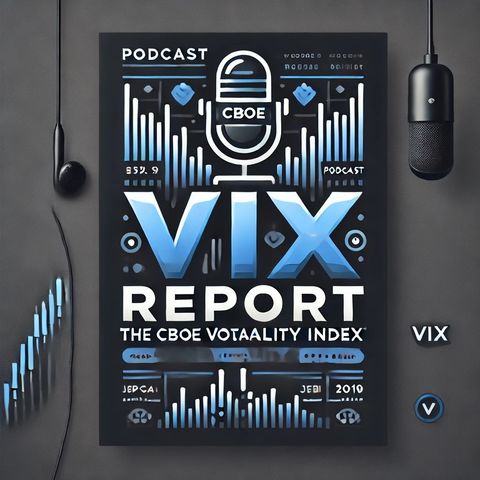"Understanding the Crucial Role of the VIX Index in Navigating Market Volatility"

Sign up for free
Listen to this episode and many more. Enjoy the best podcasts on Spreaker!
Download and listen anywhere
Download your favorite episodes and enjoy them, wherever you are! Sign up or log in now to access offline listening.
"Understanding the Crucial Role of the VIX Index in Navigating Market Volatility"
This is an automatically generated transcript. Please note that complete accuracy is not guaranteed.
Description
The Cboe Volatility Index (VIX), often referred to as the "fear index," is a crucial metric for understanding market sentiment and potential future market volatility. As of September 26, 2024,...
show more## What is the VIX Index?
The Cboe Volatility Index (VIX) is designed to present investors' expectations of 30-day volatility in the S&P 500 Index (SPX). It is derived from the prices of options on the S&P 500, illustrating the market's anticipation of future volatility. When investors foresee increased turbulence in the market, they often buy options as a hedging strategy, which drives up option prices and, subsequently, the VIX.
## Underlying Factors and Trends
Several factors and trends affect VIX movements, making it an essential tool for portfolio management and risk assessment.
- **Market Uncertainty**: The VIX typically rises during periods of increased market uncertainty. Factors such as economic instability, geopolitical volatility, or substantial market movements can drive these sentiments. For instance, during events like economic downturns or political turmoil, the VIX will surge, signaling higher expected market volatility.
- **Inverse Relationship with S&P 500**: Historically, the VIX has an inverse relationship with the S&P 500 Index. When the S&P 500 increases, the VIX tends to decrease, reflecting investor confidence and reduced market volatility expectations. Conversely, during market downturns or sell-offs, the VIX rises, indicating growing investor fear and anticipation of further turbulence.
- **Mean Reversion**: A key characteristic of the VIX is its tendency to revert to a mean over time. Periods of high volatility are generally followed by periods of lower volatility and vice versa. This mean-reverting nature influences the VIX futures term structure and plays a vital role in trading strategies. Investors and traders need to consider this property when making decisions based on VIX levels.
## Market Dynamics and VIX Percent Change
The percent change in the VIX reflects recent market dynamics and investor sentiment. For example:
- **Rising VIX**: If recent conditions have led to increased market uncertainty or a decline
Information
| Author | QP-1 |
| Organization | William Corbin |
| Website | - |
| Tags |
Copyright 2024 - Spreaker Inc. an iHeartMedia Company
